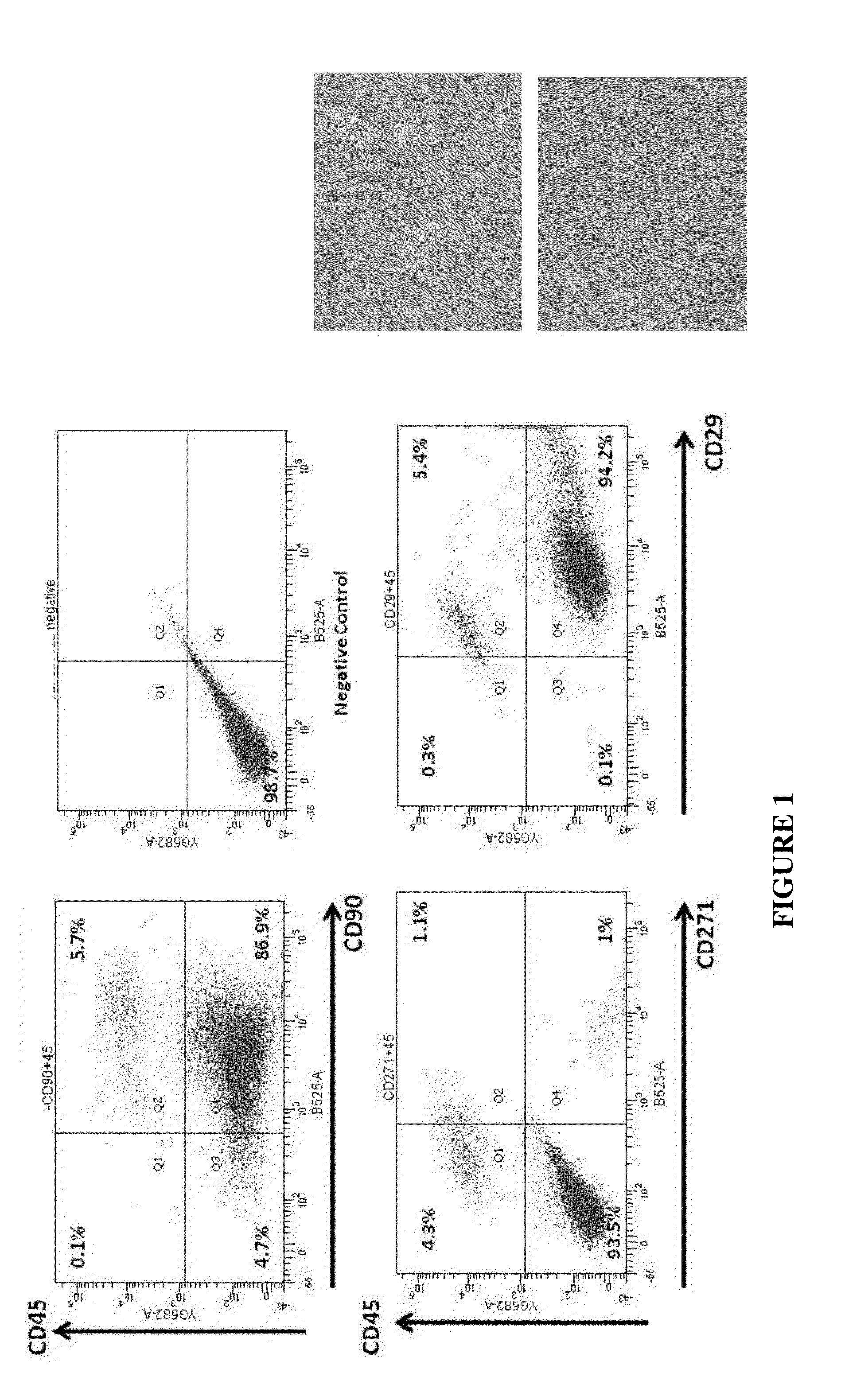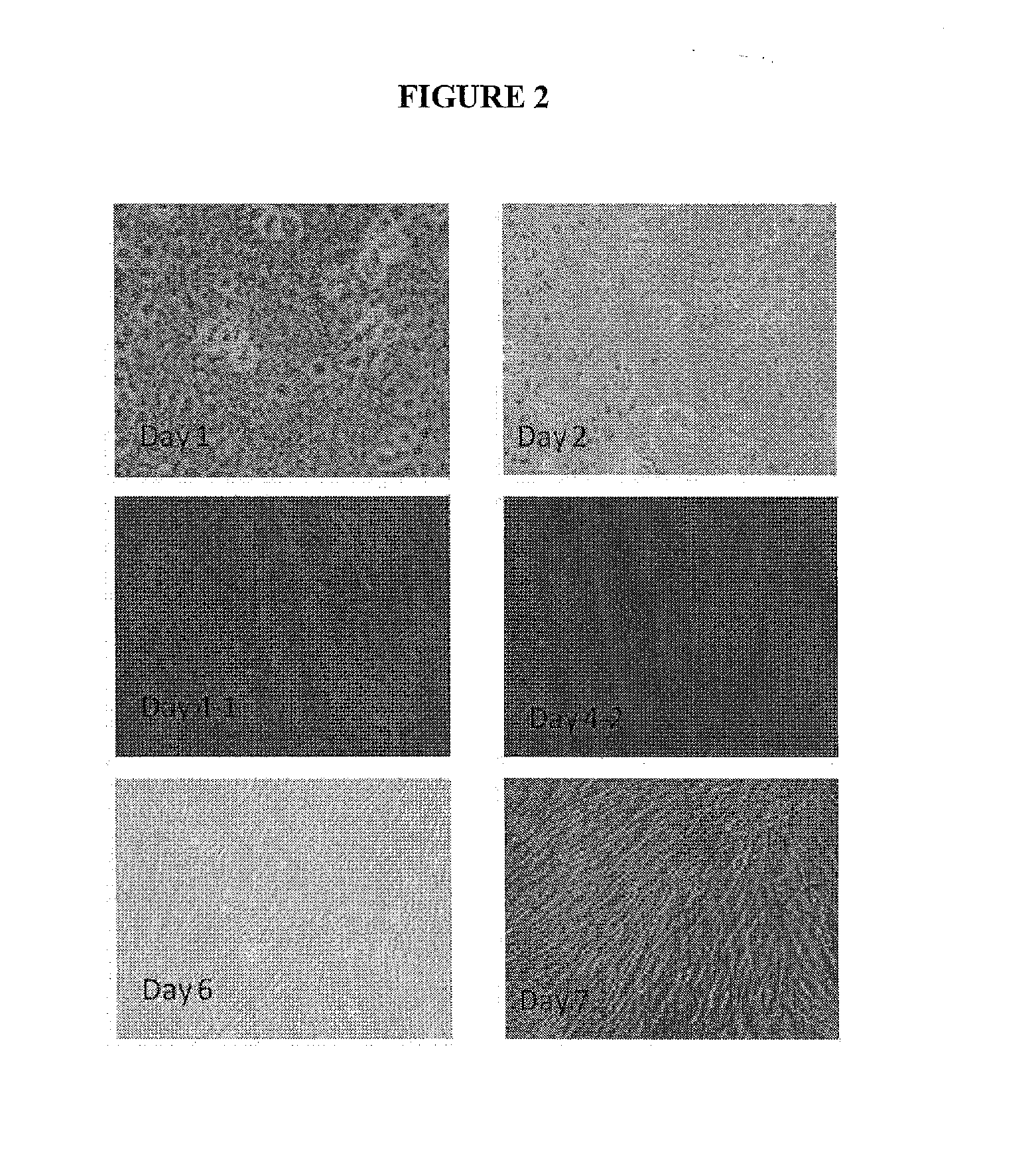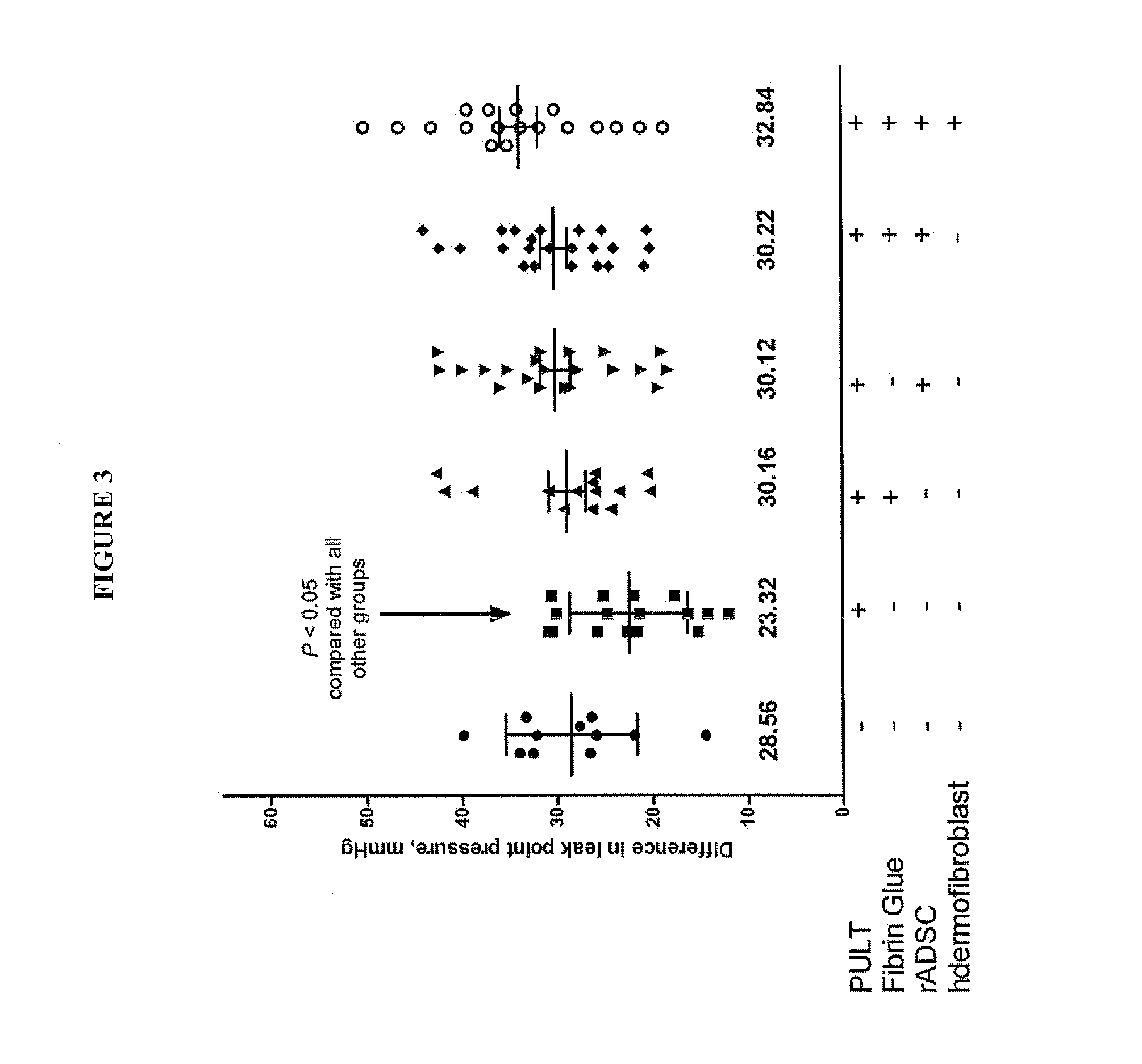Treatment of Urinary Incontinence with Regenerative Glue
a technology of regenerative glue and urinary incontinence, which is applied in the field of treatment of urinary incontinence with regenerative glue, can solve the problems of stress urinary incontinence, which is associated with a disturbing level, and achieves the effect of meliorating one or more symptoms
- Summary
- Abstract
- Description
- Claims
- Application Information
AI Technical Summary
Benefits of technology
Problems solved by technology
Method used
Image
Examples
example 1
Stromal Vascular Fraction
[0125]The stromal vascular fraction (SVF) of adipose tissue is known to contain mesenchymal stem cells (MSC), T regulatory cells, endothelial precursor cells, preadipocytes, as well as anti-inflammatory M2 macrophages [104]. Accordingly, the SVF also contains blood cells from the capillaries supplying the fat cells. Safety of autologous adipose tissue implantation is supported by extensive use of this procedure in cosmetic surgery, as well as by ongoing studies using in vitro expanded adipose derived MSC (ADSC). Equine and canine studies demonstrating anti-inflammatory and regenerative effects of non-expanded SVF cells (non-cultured) have yielded promising results. Non-expanded SVF cells have been used successfully in accelerating healing of Crohn's fistulas and in treatment of multiple sclerosis [104]. Additionally, autologous SVF administration has been used commercially in over 3000 race horses for post-injury acceleration of healing, with published effic...
example 2
The Method for Extracting, Providing and Administrating the SVF
[0129]It is notable that the whole process of liposuction, SVF extraction and injection could take approximately 2 hours.
a—Liposuction
[0130]Conventional procedure of liposuction to extract abdominal fat will be performed at the operating room. In brief, after performing local anesthesia and administrating vasoconstrictor (while the fat tissue settles and becomes less swollen), an stab wound in abdomen will be made by a 11 blade scalpel and stainless steel cannulas or microcannulas will be inserted into subcutaneous tissue. Then 200 to 300 mL adipose tissue is pumped out and collected in a sterile 1 L storage bottles (Corning, N.Y., USA). The aspirate bottle will be kept in the ice packed box. For optimal results, only aspirate that has been obtained by tumescent liposuction method was used.
b—Adipose Tissue Preservation and Delivery:[0131]The SVF harvesting protocol which is used is based on the frequently applied methods...
example 3
PUL Deficiency Causes SUI in Female Rats
[0191]A model of SUI in female rats has been developed and described [56,57]. In summary, these published data confirm the phenotype and functional similarities of PUL between humans and female rats to the level that PUL injury causes SUI in rats (FIG. 7 and FIG. 8). In addition, the feasibility of injection of the material (Fibrin Glue and MSC) in Canine Models of PUL deficiency has been tested (FIG. 9).
PUM
| Property | Measurement | Unit |
|---|---|---|
| Diameter | aaaaa | aaaaa |
| Stress optical coefficient | aaaaa | aaaaa |
| Biocompatibility | aaaaa | aaaaa |
Abstract
Description
Claims
Application Information
 Login to View More
Login to View More - R&D
- Intellectual Property
- Life Sciences
- Materials
- Tech Scout
- Unparalleled Data Quality
- Higher Quality Content
- 60% Fewer Hallucinations
Browse by: Latest US Patents, China's latest patents, Technical Efficacy Thesaurus, Application Domain, Technology Topic, Popular Technical Reports.
© 2025 PatSnap. All rights reserved.Legal|Privacy policy|Modern Slavery Act Transparency Statement|Sitemap|About US| Contact US: help@patsnap.com



